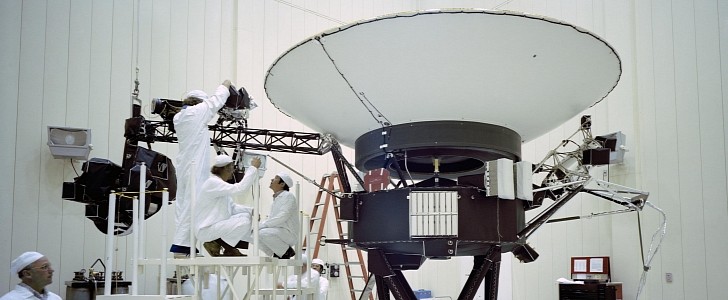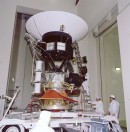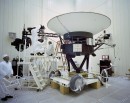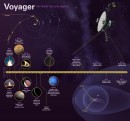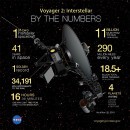NASA's Voyager 1 and Voyager 2 probes set out on a historic journey in 1977, each carrying a unique time capsule of humanity. The spacecraft went deeper into space than any other man-made object, sending back critical data throughout their voyage. Now, 45 years later, the record-breaking probes are continuing their interstellar journey.
Shortly after the launch of Voyager 2 on August 20th, 1977, followed Voyager 1. The spacecraft left our skies on September 5th and headed to explore the Solar System's gas giants, Jupiter and Saturn. Although Voyager 2 left Earth a little bit earlier, its twin reached the planets first, providing remarkable insights about them and their moons. But that doesn't mean Voyager 2 was slacking off. The probe was the first spacecraft that got up close and personal with Uranus and Neptune, offering humanity a unique perspective of the alien worlds.
During these flybys, Voyager 1 was heading toward the heliosphere, a bubble formed by the Sun's magnetic field and the solar wind that shields the planets from interstellar radiation. It left the heliosphere in 2012, becoming the first human-made object to explore interstellar space (the space between stars in a galaxy). Five years later, Voyager 2 followed the same path. The twin probes' data were combined, allowing scientists to gain a better understanding of the Sun.
The two spacecraft are now traveling in interstellar space, carrying with them a special time capsule of humanity. It's a golden record meant to last a billion years, which contains a variety of images from Earth, along with different sounds, greetings in various languages, and music.
However, the Voyagers' energy levels are dangerously low. As a result, NASA turned off all non-essential systems, including the heaters that protect the instruments from the extreme temperatures of space. And even though all five of the still-operating instruments have had their heaters turned off since 2019, they are still fully functional.
"The Voyagers have continued to make amazing discoveries, inspiring a new generation of scientists and engineers," said Suzanne Dodd, project manager for Voyager at NASA's Jet Propulsion Laboratory (JPL). "We don't know how long the mission will continue, but we can be sure that the spacecraft will provide even more scientific surprises as they travel farther away from the Earth."
During these flybys, Voyager 1 was heading toward the heliosphere, a bubble formed by the Sun's magnetic field and the solar wind that shields the planets from interstellar radiation. It left the heliosphere in 2012, becoming the first human-made object to explore interstellar space (the space between stars in a galaxy). Five years later, Voyager 2 followed the same path. The twin probes' data were combined, allowing scientists to gain a better understanding of the Sun.
The two spacecraft are now traveling in interstellar space, carrying with them a special time capsule of humanity. It's a golden record meant to last a billion years, which contains a variety of images from Earth, along with different sounds, greetings in various languages, and music.
However, the Voyagers' energy levels are dangerously low. As a result, NASA turned off all non-essential systems, including the heaters that protect the instruments from the extreme temperatures of space. And even though all five of the still-operating instruments have had their heaters turned off since 2019, they are still fully functional.
"The Voyagers have continued to make amazing discoveries, inspiring a new generation of scientists and engineers," said Suzanne Dodd, project manager for Voyager at NASA's Jet Propulsion Laboratory (JPL). "We don't know how long the mission will continue, but we can be sure that the spacecraft will provide even more scientific surprises as they travel farther away from the Earth."
